Years ago, my father and I were hiking in his forested plot of land in Preston County, West Virginia. As we tramped through the woods, he excitedly told me about ginseng and the crazy money people in the mountains used to make from selling it abroad. I was in awe as my father described it as a gold rush for people who live off the land. Though the root never did take for him, it was the tantalizing myth of Appalachian ginseng that gave him hope in the first place.
For the last 200 years, Ginseng has been a mythical plant that some Appalachians have cashed in on—but its future in the region appears uncertain.
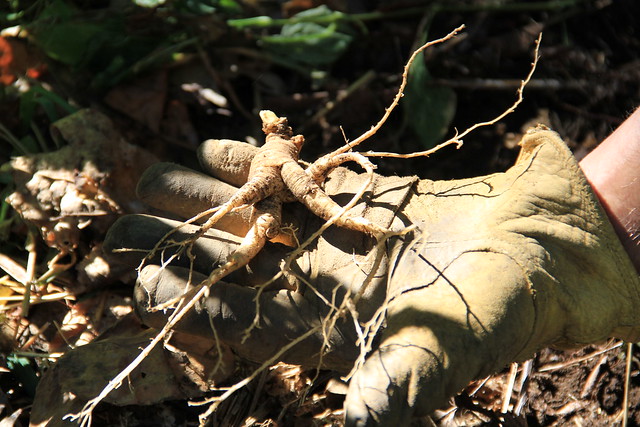
Ginseng, panax, is a root-based, herbaceous plant found in forest understories of the Eastern deciduous forest. This small, tan root shoots up “prongs,” or leaves, from the ground and grows distinct red berries when it matures. Its roots also form offshoots that resemble humans, which might explain the Mandarin word, “renshen”(人参), meaning person root. Farmers can tell the age of the root by its scar patterns. After harvest, people use the plant in foods, medicines, and teas. Some describe its taste in tea as “earthy” and “bitter”.
Discovered 5,000 years ago in the mountains of Manchuria, northern China, and used ever since, the ginseng root enjoys huge popularity and value in Asian medicines. However, Asian ginseng was overharvested years ago, leaving Asia barren of the root. Therefore, much of the Asian ginseng market relies on American Ginseng and many consumers are willing to pay top dollar for it.
Ginseng is a miracle cure-all kind of root. An online search will refer to its benefits as decreasing stress, increasing energy and sexual potency, fighting cancer, and more—but its health benefits are disputed. Still, the root is booming as a herbal medicine for teas and essential oils. The wild type of root is supposedly better in medicine and has always been a high-price commodity. These days, the Appalachian root is worth $500-$1,000 per pound and almost all of the root is exported overseas.
American ginseng, panax quinquefolius, has been farmed for the past few centuries. Its trade history dates back to the fur trade during the colonization and exploration of the Appalachian mountains. In local slang, “sanger” refers to the individual who finds and digs up the roots while “sang” refers to the plant or root of ginseng. Sangers don’t go ginseng picking; instead, it’s often referred to as ginseng “hunting.”
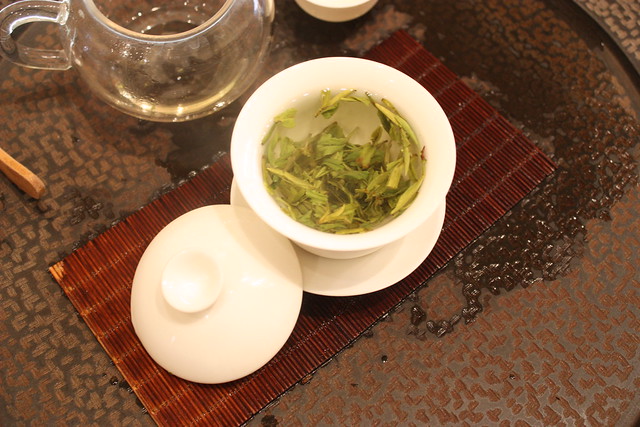
Ginseng has a local market, too. Recently, at a silent auction in North Carolina, a table was filled with ginseng goods, such as chocolate ginseng truffles. Bear Alchemy, an Appalachia company founded by a poacher-turned-steward, makes a honey nectar with ginseng and focuses on reclaiming the Appalachian root.
However, the ginseng market is highly regulated due to its status as an endangered species. It can only be picked after it has aged for five years and 18 states require at least three leaves on the plant. Its harvest season usually runs from September to December. Then, farmers can only possess or sell it for a limited time. But many farmers in Appalachia don’t grow it industrially like corn or soy: For the root to be worth good money, it must be grown in the wild. Growers need to plant ginseng in the woods under the shade of trees and other underbrush.
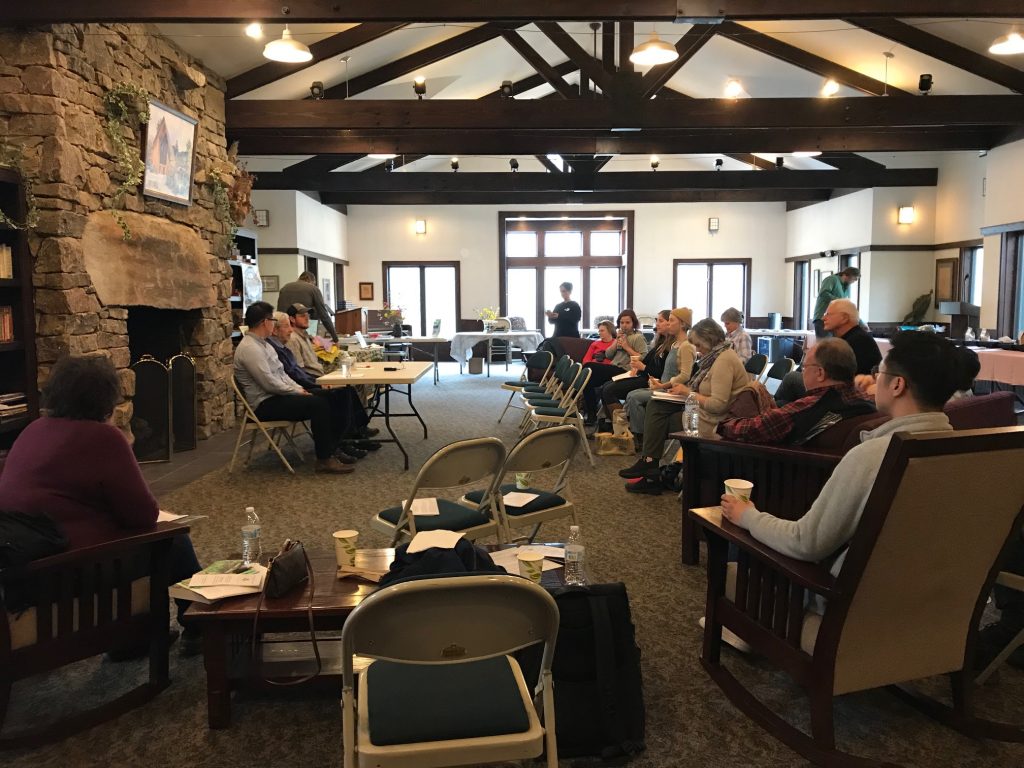
2019 Annual Meeting in North Carolina. Via NCGA.
The North Carolina Ginseng Association (NCGA), based in Marshall, is working to promote ginseng as a “special crop” and grow the industry. At the 2019 annual meeting, President Robert Eidus discussed many of the looming issues and opportunities, such as harvester education or improper harvesting methods, facing the industry. The group is a resource for ginseng growers and ginseng conservation in the region. They’ve pressured lawmakers to pass the bills that help preserve ginseng for future generations. Recent successes like HB840 and HB841 add regulation and additional permits for ginseng growers
NCGA Secretary Jessica Larson entered the industry in 2017 and calls herself a “ginseng gardener” rather than farmer. She’s been “interested in medicinal herbs and essential oils and began growing and distilling my own herbs about five years ago.” When she realized that her land was ideal for ginseng, she became excited about the possibilities and reached out to Eidus through his company, Goldenseal, to buy some roots and seeds. The NCGA was welcoming as she learned best practice and connected with more “sangers.”
Collaboration within the NCGA, however, must work around the need for privacy. “Ginseng farmers do not want others to know they are growing ginseng because of the risk of poaching, which is a huge problem,” Larson said. This poaching threat makes it difficult to find active members because they fear that it will put them on the “radar.”
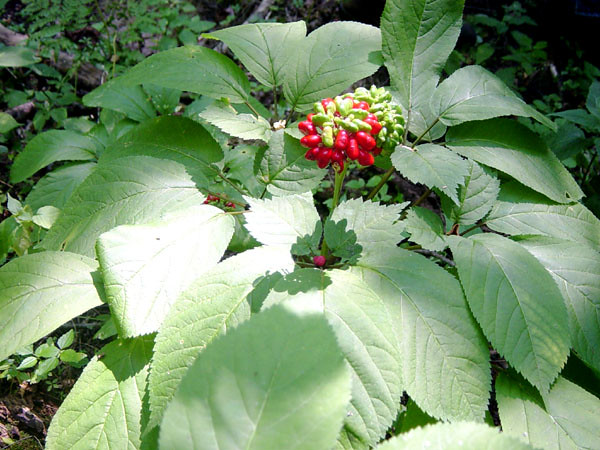
A ginseng farmer told Vice last year that the “First rule of ginseng club, you don’t talk about ginseng club.” The industry grabs media attention because of the high levels of thieving and bootlegging. The History Channel show Appalachian Outlaws, for instance, followed a few ginseng hunters looking to get rich. Ginseng root thieves are often searching for farmers’ plots in the region
News reports are filled with tales of bootleg sangers, who can be root thieves or anti-regulation growers. In 2014, North Carolina made its first conviction for ginseng thievery. The Great Smoky Mountains National Park is a target for ginseng poaching that is only getting worse. In 2018, a bear killed a man suspected of poaching.
Pennsylvania has also cracked down on out-of-harvest planters with “Operation Root Cause” in 2018, charging 14 people for illegal ginseng harvesting. And in May 2019, a woman was charged with the Lacey Act of 1900 for illegally selling and purchasing black bear gallbladders and ginseng in North Carolina and Georgia.
Some “bootleg sangers” outright detest the high regulations and taxes of both state and federal governments. They aren’t trying to rob the plants of others, but they don’t believe in regulation. They plant and harvest in secret on their property or nearby parks without informing the government.
The lack of regulation enforcement and overharvesting are leading factors driving the decline of ginseng in Appalachia.
Bootlegging might not only be the only potential cause of ginseng’s demise, though. Research from West Virginia University’s Wild Ginseng Conservation Institute shows a rocky future for the plant. Researchers led by James B. McGraw are finding more invasive species in the region and deer browsing also aids the decline. Climate change and overharvesting—regulated or not—are dangers to the plant, said Jennifer Chandler, an assistant professor of biology at West Chester University and former Wild Ginseng Institute researcher.
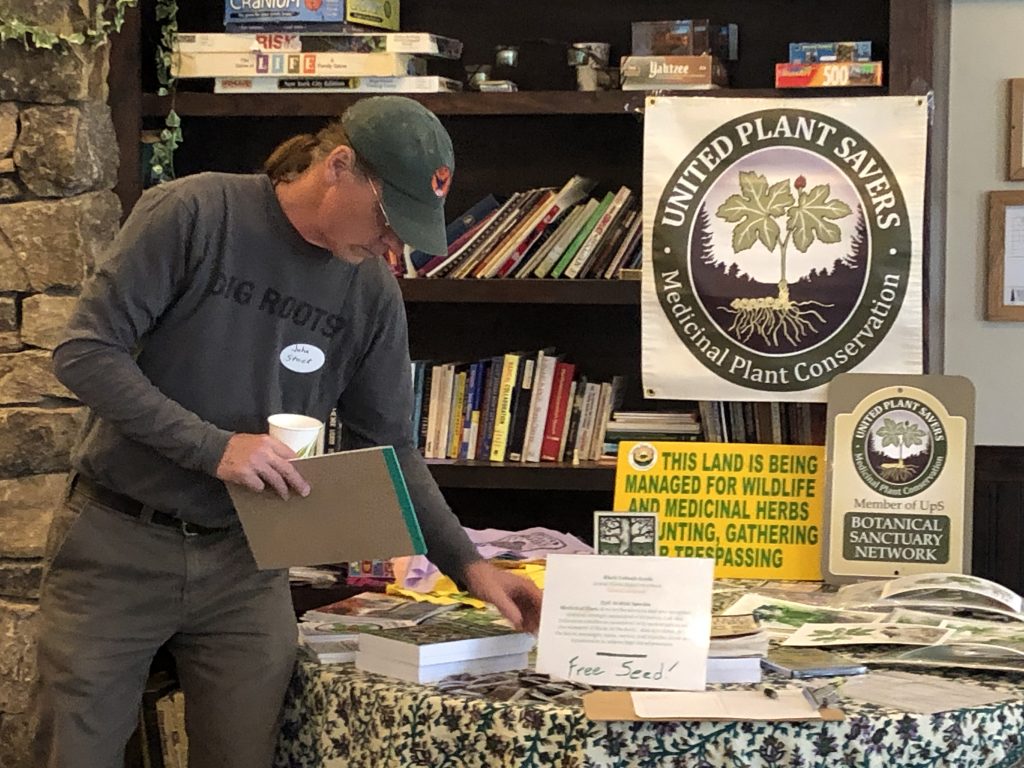
The looming issues of ginseng have pushed the NCGA and other leaders to focus on conservation and education events. The organization works with regional researchers and nonprofits, like Appalachia Sustainable Development, to preserve ginseng. Larson, like many in the industry, still has hope.
“The Fresh Ginseng Market is an exciting development and is already changing the way ginseng is harvested and sold,” she said. “Wild populations continue to decline due to over harvesting. It is our hope that through growing and farming efforts and education that ginseng will once again become plentiful in Western North Carolina.”
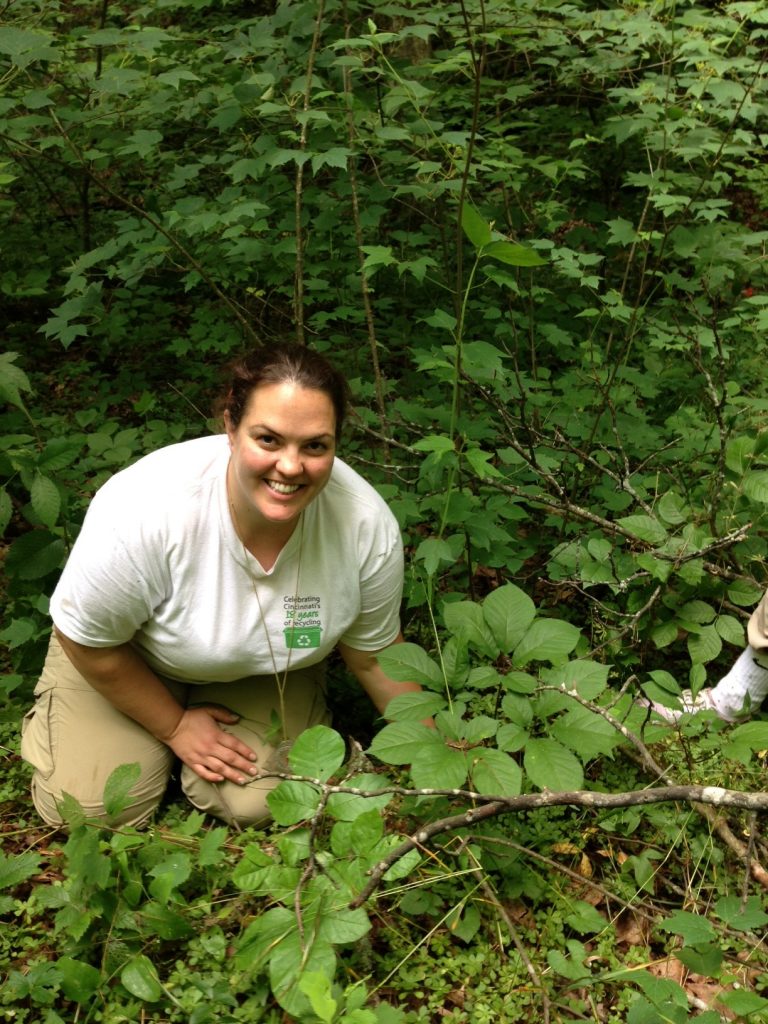
The hope for preservation isn’t an empty ideal, either. “Stewardship of wild populations and conservation through cultivation,” Chandler noted, can make ginseng more common. Following formal stewardship methods, McGraw “documented a fivefold increase in population size from 2007-2018.”
Chandler finds that many of her students are interested in ginseng because of its place in Appalachian culture and the economy. She and her students are identifying “alternate harvest strategies that ensure the persistence of both wild ginseng harvest and wild ginseng populations.” As a result of her research, she hopes that “current harvest regulations can be improved to better protect this Appalachian icon,” she said.
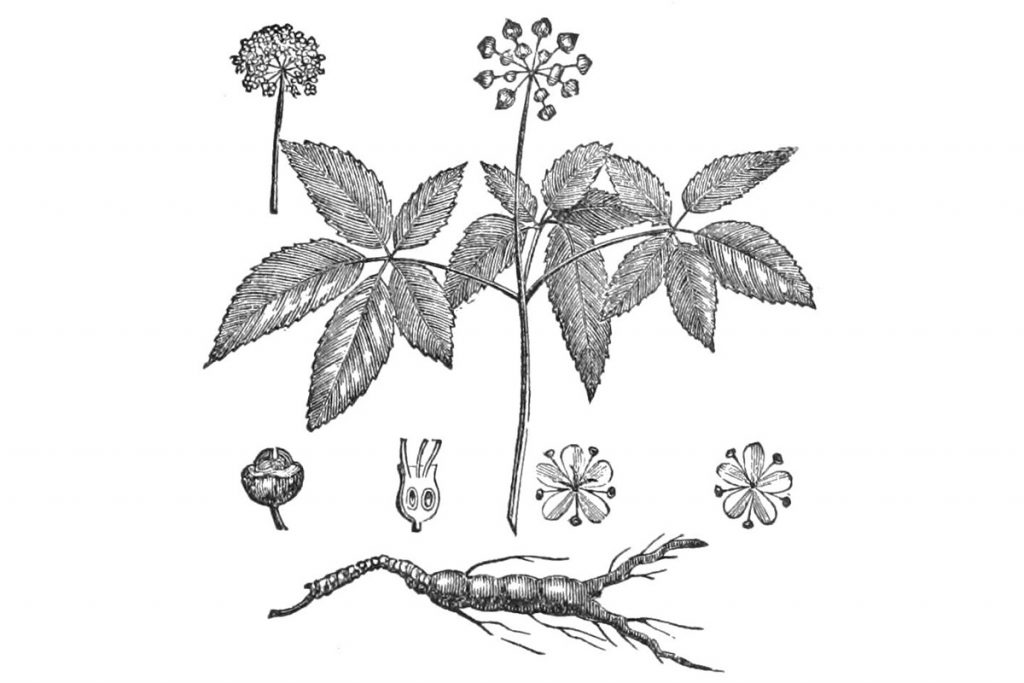
Ginseng plant, 1718. Illustration by Louis Boudan. Via Wikimedia.
As environmental decline for the root looms, the Smithsonian Institute’s Center for Folklife and Cultural Heritage has taken a special interest in preserving and telling the story of Appalachia’s wonder plant. The Folklife series started a virtual fellowship for storytelling and writing about ginseng. In June 2020, the Smithsonian will feature the plant in a special exhibition in the Folklife Festival in Washington DC.
This exhibit will help document the stories of ginseng farmers across Appalachia. By capturing its cultural relevance, the exhibit hopes to document the plant’s history when its very existence and future could be at risk.
Subscribe to The Patch, our newsletter, to stay up-to-date with new expatalachians articles and news from around Appalachia.
 Alena Klimas is a writer and cofounder of expatalachians. Klimas is passionate about economic and community development in Appalachia. In West Virginia, she’s been a part of a grassroots movement for LGBTQ inclusivity and reform. Now, she lives and works abroad in rural community development. To learn more about the expatalachians team click here.
Alena Klimas is a writer and cofounder of expatalachians. Klimas is passionate about economic and community development in Appalachia. In West Virginia, she’s been a part of a grassroots movement for LGBTQ inclusivity and reform. Now, she lives and works abroad in rural community development. To learn more about the expatalachians team click here.
Additional Sources
- https://medium.com/usfishandwildlifeservicenortheast/operation-root-cause-diggers-dealers-and-the-case-for-wild-ginseng-3b48ea28c5bf
- https://foreignpolicy.com/2016/09/07/the-thrill-of-the-hunt-ginseng-smuggling-poaching-boone-north-carolina-china/
- https://www.wsls.com/news/virginia/southwest-virginia/protecting-the-mountain-gold-virginia-cracks-down-on-illegal-ginseng-harvesting
- https://news.uga.edu/ginseng-decline-eastern-united-states/
- https://www.fws.gov/international/plants/american-ginseng.html
- https://www.100daysinappalachia.com/2018/03/19/on-the-ginseng-patrol-in-appalachian-ohio/
- The Wild Ginseng Conservation Institute of West Virginia University

